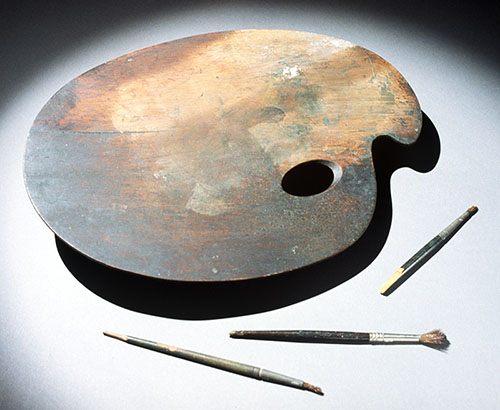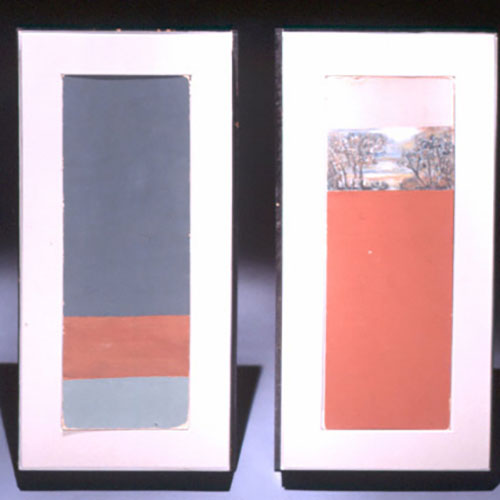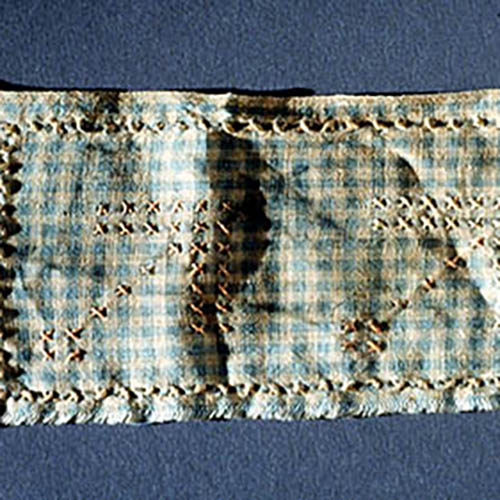Arts and Crafts
As a child, Carver learned to how to draw and paint pictures. Later, as a college student he enrolled in art class. Although he switched to agricultural studies, Carver continued to paint all his life. One of his paintings won Honorable Mention in the 1893 Chicago World's Fair.
Carver found time in his hectic schedule to crochet, knit, and do needlework. He found these activities satisfying and they enabled him to produce useful items for friends. He had a great appreciation for the world around him, in particular, the materials found in nature. He dyed many of his own threads and fibers with natural dyes made from local walnut, mulberry, and ochre clay. He recycled old burlap and string bags into functional and attractive needlework. Bark fibers were woven into mats.
He developed a rich array of house paint colors to encourage poor local farmers to improve the appearance of their homes. He arranged the pigments in pleasing combinations, ceiling colors on top, border and cornice colors in the middle tier, and wall colors on the bottom. The paints were used on the Tuskegee campus and throughout the area.




